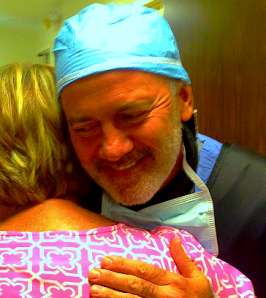Every dog has his day, right?
In our culture, groups, individuals, and even inanimate objects are frequently honored with their very own special twenty-four hours. These days of recognition give us pauses to examine their meanings and further their causes.
But there’s a compassionate and deserving group of people who have not yet made the list…the caring people who treat our pain.
For now, National Pain Care Providers Day is only a dream.
It doesn’t exist.
It should.
It can.
And it will…with your help.
National Pain Care Providers Day
March 20, 2015
It’s time to recognize all who generously and selflessly strive to alleviate suffering. This includes physicians, dentists, nurses, therapists, emergency responders, trainers, masseuses, pharmacists, caregivers, mothers and anyone who gives of her or himself to ease pain.
Why is National Pain Care Providers Day necessary?
Pain is universal. It is the most common medical complaint. There is no escaping it. Pain touches every life. And as our population continues to age, pain is occurring in epidemic proportion.
Pain care is sometimes simple and sometimes extremely complicated. Caregivers can feel tremendous pressure from government agencies, police, lawyers, administrators, addicts, abusers, patients, families, administrators, insurance providers, and the media. As a result, caregivers are too often reduced to feeling “You’re damned if you do and damned if you don’t.”
In reality, they should be praised because of what they do.
Caregivers who persevere deserve our support, gratitude and, at the very least, a day of recognition.
Popular opinions regarding pain care and treatments are evolving rapidly. Taking a special day to spotlight best practices and inspire possibilities would not only bolster the advancement of this vital field of medicine, it would encourage the legions of those who suffer in lonely silence. Less suffering and better lives for all are the goals.
Celebrating National Pain Care Providers Day on March 20, 2015 – the first day of spring – is akin to celebrating hope. From this day forward, the vernal equinox, light overcomes darkness.
So let’s join together and recognize the first day of spring, March 20, 2015, as National Pain Care Providers Day. Let’s make this day special for the special people who treat our pain. Start by sharing your comments and ideas on this blog and/or emailing paincareprovidersday@gmail.com. Pass along the message on social media (Twitter, Facebook, etc.) and contact your civic leaders. Be a vital part of this movement.
Let Hercules himself do what he may,
The cat will mew and dog will have his day.
~ William Shakespeare’s Hamlet
You are the playwright now.
The parchment is blank.
Imagine.
Create.
And celebrate!
National Pain Care Providers Day
March 20, 2015
*






